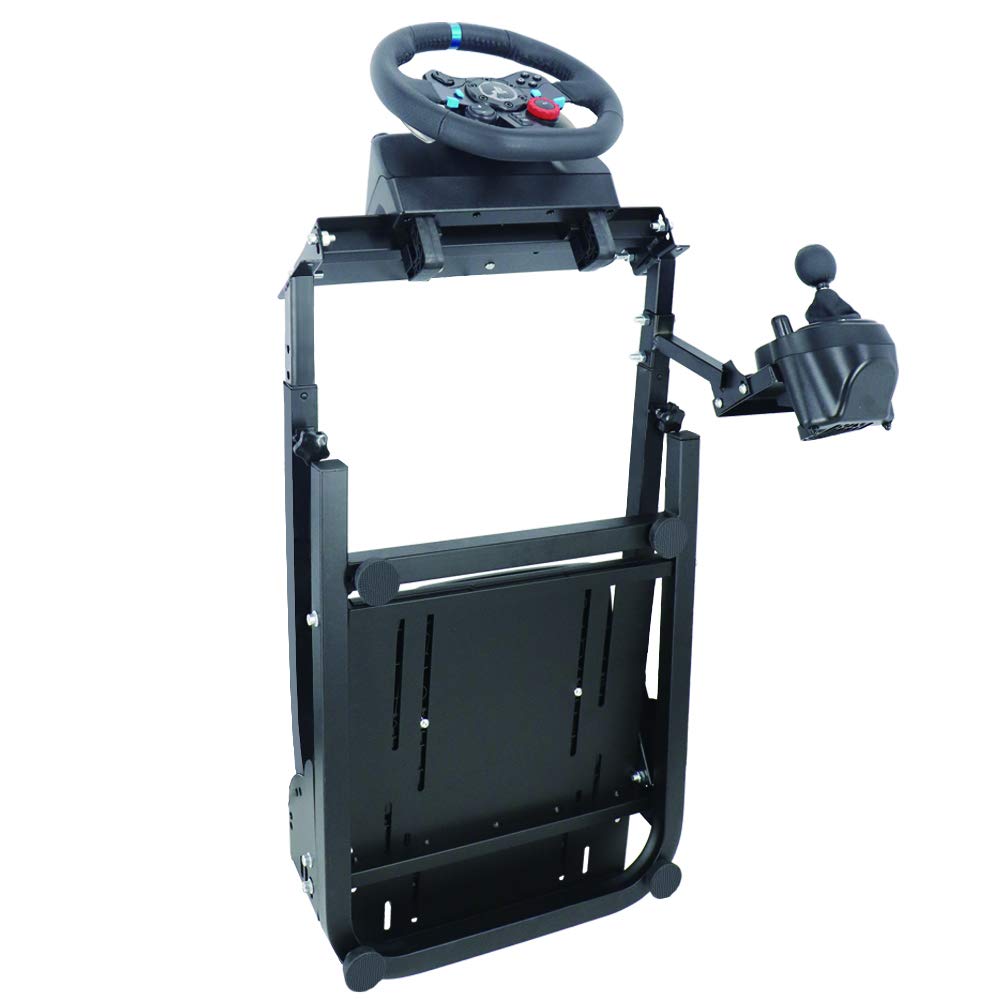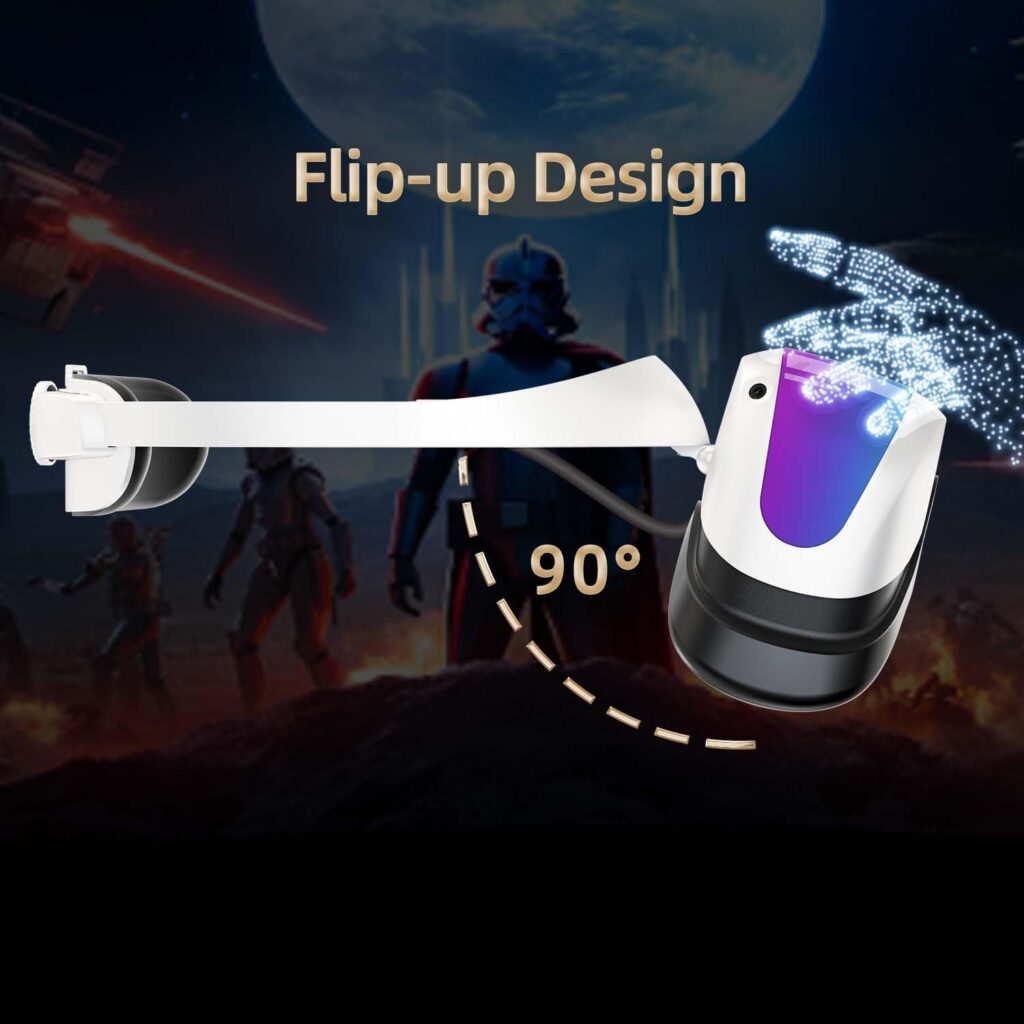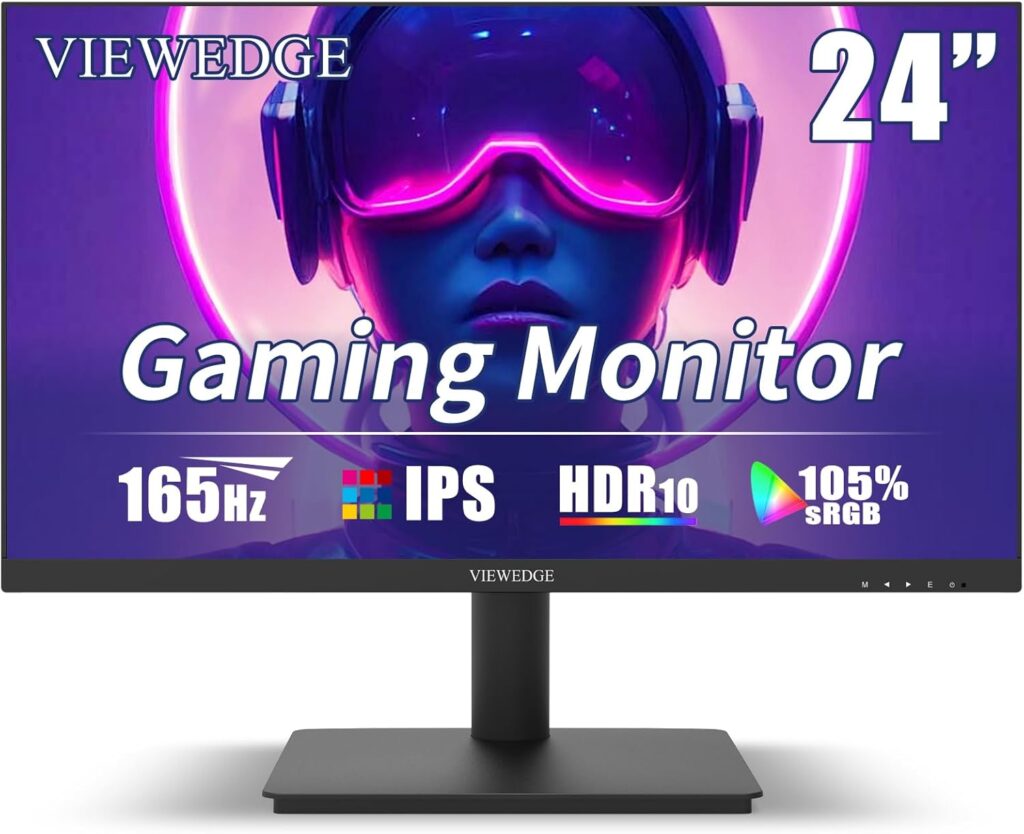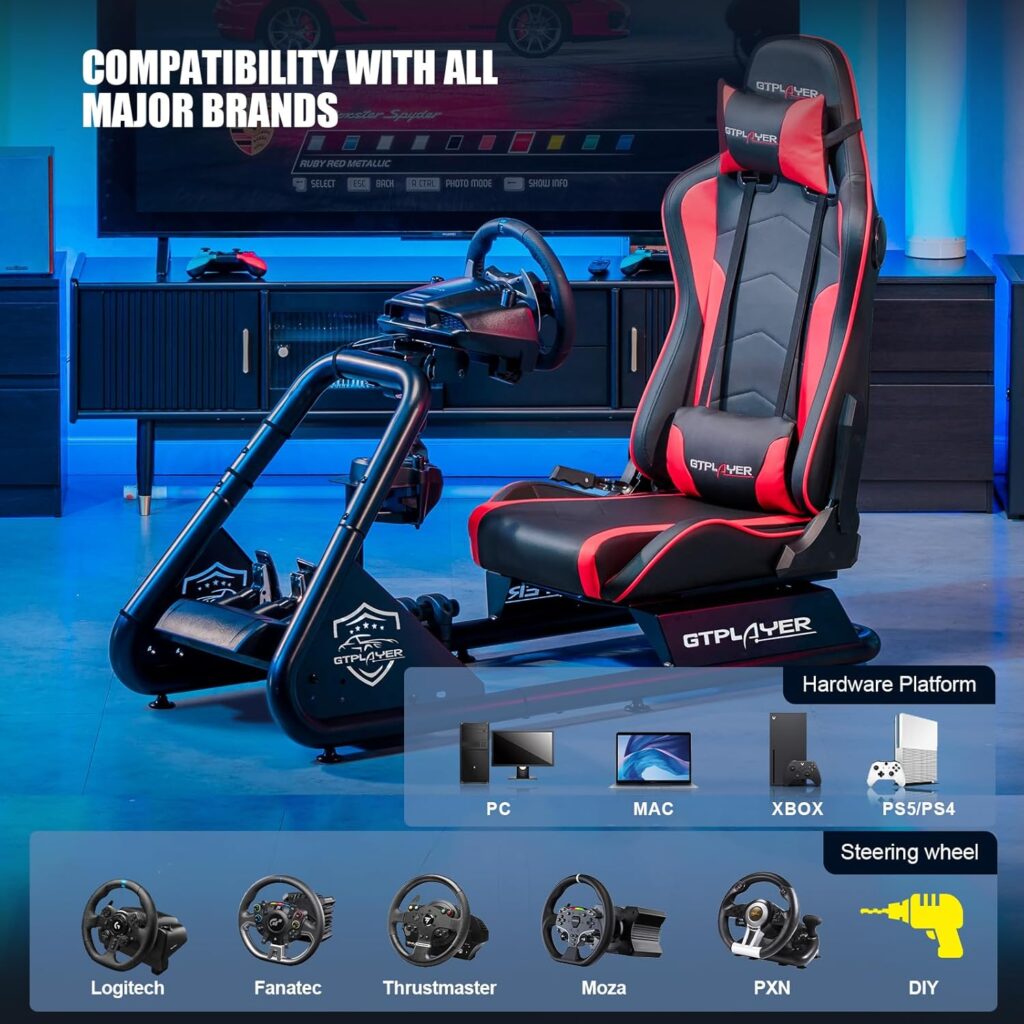So you’ve always dreamed of experiencing the thrill of a motion simulator, but you’re worried about the hefty price tag that usually comes with it. Fear not, because in this article, we’ll show you how to set up your very own motion simulator on a budget. Whether you’re a racing enthusiast or a virtual reality enthusiast, we’ve got you covered. Get ready to buckle up and feel the adrenaline rush as we guide you through the steps to bring the excitement of a motion simulator into your own home, without breaking the bank.
Budget Considerations
When setting up a motion simulator on a budget, there are several important considerations to keep in mind. By carefully researching affordable options, determining your budget limit, and prioritizing necessary components, you can create a cost-effective setup that still provides an immersive experience.
Researching Affordable Options
To begin your budget motion simulator journey, it’s essential to research affordable options. Look for simulators that offer a good balance of quality and price, considering factors such as motion range, build materials, and customer reviews. Additionally, explore both new and used simulators, as well as DIY options that allow for customization and cost savings.
Determining Your Budget Limit
Setting a budget limit is crucial to avoid overspending and ensure you stay within your financial means. Consider how much you are willing to allocate for your motion simulator setup, taking into account not only the initial costs but also ongoing expenses such as software updates, maintenance, and potential upgrades in the future. By determining your budget limit at the outset, you can make informed decisions throughout the setup process.
Prioritizing Necessary Components
When working with a limited budget, it’s important to prioritize the necessary components for your motion simulator setup. Identify the essential elements that will provide the most significant impact on your experience, such as the motion platform, hardware, and software. By focusing on these core components and potentially compromising on less essential features, you can optimize your budget without sacrificing the overall quality of your setup.
Types of Motion Simulators
Motion simulators come in various configurations, each offering different degrees of freedom (DOF) that impact the range and type of motion the simulator can replicate. It’s important to understand the different types to determine which one suits your needs and budget.
1-DOF Simulators
One Degree of Freedom (1-DOF) simulators are the simplest and most affordable option. They typically offer motion along a single axis, such as pitch or roll. While they may not provide the full range of motion found in more advanced simulators, they can still deliver an immersive experience within a limited budget.
2-DOF Simulators
Two Degree of Freedom (2-DOF) simulators introduce motion along two axes, usually pitch and roll. These simulators offer more dynamic movement than 1-DOF versions, allowing for a more realistic simulation experience. While they may require a slightly higher budget, 2-DOF simulators are still a cost-effective option for many enthusiasts.
3-DOF Simulators
For a more immersive experience, consider a Three Degree of Freedom (3-DOF) simulator. These simulators introduce motion in three axes, typically pitch, roll, and heave. With the added dimension of vertical movement, 3-DOF simulators provide a greater sense of realism. However, they may come with a higher price tag, so it’s important to assess their value against your budgetary constraints.
6-DOF Simulators
At the top end of the motion simulator spectrum are Six Degree of Freedom (6-DOF) simulators. These advanced systems offer full motion along all six axes: pitch, roll, yaw, surge, sway, and heave. While they provide the most realistic and immersive experience, 6-DOF simulators tend to be the most expensive option. Consider your budget carefully when determining if this level of motion is necessary for your setup.

This image is property of images.unsplash.com.
Choosing the Right Hardware
Selecting the right hardware is crucial to ensure compatibility and optimal performance for your motion simulator. Consider the following factors when making your hardware choices:
PC Requirements
When choosing a PC for your motion simulator, it’s important to check the system requirements of the simulation software you plan to use. Ensure that your PC meets or exceeds the recommended specifications to avoid any performance issues or compatibility conflicts. Additionally, consider future-proofing your setup by choosing a PC with upgradeable components.
Compatible Accessories
In addition to the motion platform, there are several accessories that can enhance your motion simulator experience. Research and select accessories that are compatible with your chosen hardware and software, such as racing wheels, flight controllers, and VR headsets. Look for affordable options without compromising functionality and quality.
Sourcing Affordable Controllers and Sensors
To keep your budget in check, consider sourcing affordable controllers and sensors for your motion simulator. There are many third-party options available that offer comparable functionality to more expensive alternatives. Look for well-reviewed products and consider reaching out to the budget motion simulator community for recommendations on cost-effective options.
Building Your Motion Platform
Building your motion platform involves selecting a frame or chassis, choosing motors and actuators, and designing a suspension system. These components work together to provide the motion and stability necessary for an immersive simulation experience.
Selecting a Frame or Chassis
The frame or chassis of your motion platform is the foundation of your setup. Choose a sturdy and suitable frame that can withstand the forces exerted during motion and maintain stability. Consider materials such as steel or aluminum for durability and rigidity without breaking the bank.
Choosing Motors and Actuators
Motors and actuators are responsible for driving the motion of your simulator. Opt for motors and actuators that are both powerful and reliable within your budget. Consider factors such as torque, speed, and noise levels. Research different options and read customer reviews to find a balance between performance and cost.
Designing a Suspension System
A well-designed suspension system helps absorb and dampen the forces generated during motion. Choose materials and components that offer the necessary flexibility and stability while being cost-effective. Consider using materials such as springs or dampers to optimize the suspension system’s performance within your budget.

Software and Game Compatibility
Exploring compatible simulation software and configuring simulators for different games is essential to ensure a seamless and enjoyable experience with your motion simulator.
Exploring Compatible Simulation Software
Research and identify simulation software that is compatible with your motion simulator hardware. Look for software that offers a wide selection of compatible games and provides the level of realism and customization you desire. Consider both free and paid options, as there are often affordable or even free alternatives that offer excellent functionality.
Configuring Simulators for Different Games
Once you have selected the simulation software for your motion simulator, it’s important to configure the settings for different games. Each game may have specific motion profile settings that need to be adjusted to achieve the desired experience. Take the time to explore the settings within the software and experiment with different configurations to find the optimal setup for each game.
Creating a Comfortable Setup
In addition to the motion aspect, creating a comfortable setup is vital to ensure an enjoyable and immersive experience with your budget motion simulator. Consider the following factors to enhance your comfort:
Ergonomic Considerations
Ensure that your seating position, pedal layout, and control placement are ergonomic and comfortable. Invest in a suitable racing seat or chair that provides proper support and adjustability. Consider using accessories such as pedal mounts and wheel stands to achieve the desired ergonomic setup without breaking your budget.
Optimizing Audio and Visuals
To enhance your immersion, optimize the audio and visuals of your motion simulator. Invest in a decent set of speakers or headphones to provide realistic sound effects. Consider affordable options for display devices such as monitors or projectors that meet your visual preferences. Research optimal display resolutions and audio configurations to achieve a captivating experience without overspending.
Enhancing Immersion with Add-ons
Consider adding affordable accessories to enhance the immersion of your motion simulator. For example, tactile transducers can provide vibration feedback, and wind simulators can create an additional sensation of speed. Explore DIY solutions and budget-friendly alternatives for these add-ons to achieve a more immersive experience without straining your budget.

Safety and Maintenance
Ensuring safety and maintaining your motion simulator is essential for your well-being and prolonging the lifespan of your setup. Consider the following measures:
Ensuring Structural Soundness
Regularly inspect your motion simulator for any signs of structural damage or wear and tear. Check for any loose bolts, cracks, or excessive vibrations that could compromise the stability and safety of your setup. Reinforce weak areas and address any issues promptly to prevent further damage or accidents.
Implementing Safety Measures
Take necessary safety precautions when operating your motion simulator. Secure your setup to prevent tipping or movement during intense motion. Use seat belts or harnesses to keep yourself securely in place. Additionally, ensure adequate space around your motion simulator to avoid collisions with objects or walls.
Maintaining and Troubleshooting
Perform regular maintenance on your motion simulator to keep it in optimal condition. This may include cleaning, lubricating moving parts, and inspecting electrical connections. Familiarize yourself with the troubleshooting procedures outlined in the user manual or seek support from the manufacturer or online communities. Proactive maintenance and prompt troubleshooting can prevent costly repairs and downtime.
Community and Online Resources
Joining simulator enthusiast forums, watching tutorials and DIY guides, and engaging with the budget motion simulator community can provide valuable insights and support throughout your motion simulator journey.
Joining Simulator Enthusiast Forums
Connect with like-minded individuals by joining simulator enthusiast forums and online communities. These platforms offer a wealth of knowledge, advice, and support from experienced motion simulator enthusiasts. Engage in discussions, ask questions, and share your own experiences to gain valuable insights and build connections within the community.
Watching Tutorials and DIY Guides
Utilize the plethora of tutorials and DIY guides available online to expand your knowledge and learn from experienced motion simulator builders. Video tutorials and step-by-step guides can provide valuable instructions and tips on various aspects, such as building, troubleshooting, and optimizing your motion simulator on a budget. Take advantage of these resources to enhance your understanding and improve your setup.
Engaging with the Budget Motion Simulator Community
Engage with the budget motion simulator community through social media groups, online forums, and dedicated websites. Interacting with others who are also setting up motion simulators on a budget allows you to exchange ideas, recommendations, and cost-saving strategies. Share your progress, seek guidance, and contribute to the communal knowledge base to further enrich the budget motion simulator community.

This image is property of images.unsplash.com.
Thrifty Upgrades and Modifications
As your motion simulator setup evolves, you may find opportunities for thrifty upgrades and modifications to enhance realism and performance.
Upgrading Individual Components
Consider upgrading individual components of your motion simulator to improve its capabilities within your budget. Focus on components that have the most significant impact on performance, such as motors, sensors, or controllers. Explore the second-hand market for affordable options or look for budget-friendly alternatives that offer improved features or compatibility.
Enhancing Realism with DIY Additions
DIY additions can significantly enhance realism in your motion simulator without breaking the bank. Consider building and integrating tactile feedback systems, such as vibration motors or transducers, to replicate the sensations of road or flight conditions. Explore tutorials and online resources for cost-effective DIY projects that can add an extra layer of immersion to your setup.
Modifying Simulators for Better Performance
With some creative modifications, you can optimize your motion simulator’s performance on a budget. Experiment with adjustments to the suspension system, fine-tune the software settings, or implement customizable control interfaces. Utilize the knowledge and experiences shared within the budget motion simulator community to explore practical modifications that can enhance your simulator’s performance without significant financial investment.
Finalizing Your Budget Motion Simulator
Once you have set up your motion simulator within your budget, there are a few final steps to complete your journey.
Testing and Adjusting Settings
After assembling and configuring your motion simulator, thoroughly test its performance by running various simulation scenarios. Pay close attention to the accuracy and responsiveness of the motion platform, as well as the compatibility with different games and software. Make any necessary adjustments to the settings to ensure a seamless and enjoyable experience.
Sharing Your Experience with Others
Share your motion simulator experience with others, such as friends, family, or the online community. Document your setup and highlight the budget-friendly aspects and innovative solutions you employed. By sharing your experience, you can inspire and assist fellow motion simulator enthusiasts who are looking to create a similar setup on a budget.
Gradually Expanding and Improving Your Setup
Your budget motion simulator journey does not have to end with the initial setup. Gradually expand and improve your setup as your budget allows and new affordable options become available. Keep an eye on advancements in motion simulator technology, software updates, and cost-effective upgrades that can further enhance your simulation experience. Continual improvement and expansion will keep your setup fresh and exciting without straining your budget.

This image is property of images.unsplash.com.




